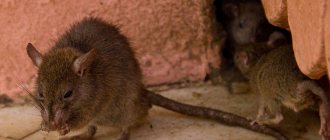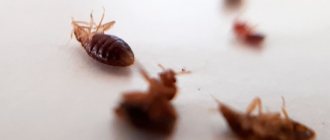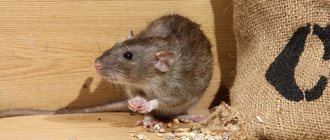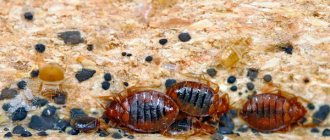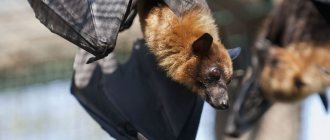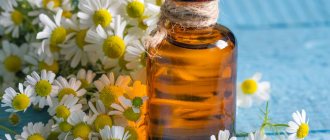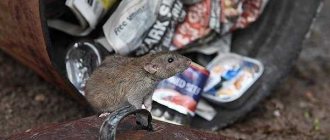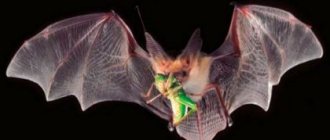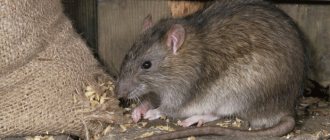Poisoning of rabbits and rodents by poisonous plants.
A huge part of the diet of rabbits and rodents consists of plants or their individual parts (leaves, branches, fruits).
Therefore, it is important that nothing dangerous or poisonous gets on the pet’s table. Remember, if you cannot determine whether a given plant is poisonous or not, then you should not feed it to your pet at all. However, such cases of poisoning often occur. And since rodents and rabbits are small animals, a small amount of plant poison can lead to dire consequences. Young animals are especially susceptible to poisoning. Insidious plants can look very “appetizing”; they can even be used by humans (for example, for medicinal purposes). So you shouldn’t rely on intuition when collecting herbs for food. Here you must have absolute confidence and knowledge.
Let's look at some of the symptoms that accompany intoxication with poisonous plants in rats, guinea pigs, chinchillas, squirrels and other small pets.
Signs of poisoning can vary, as different poisons affect the body differently.
The most common symptom is indigestion (colic, vomiting, excessive salivation, severe pain and bloating, diarrhea, or, conversely, constipation). In this case, intoxication is most often accompanied by a depressed state, although there are poisons that, on the contrary, lead to excitement and anxiety. The pupils may be pathologically narrowed or dilated. If the poison acts on the nervous system, convulsions, paralysis, and impaired coordination of movements may occur. Breathing may be difficult, and the frequency of breathing increases due to pain. Some poisons affect the cardiovascular and circulatory system, as a result of which an increased or, conversely, barely palpable pulse, an increase or decrease in pressure, arrhythmias, and spontaneous bleeding may occur. Pregnant females may experience abortion if poisoned.
In our region, the most common poisonous plants are buttercup, spurge, foxglove, castor bean, horsetail, celandine, datura, hemlock, and henbane. Also poisonous to rabbits and rodents are aloe vera, apple and pear seeds, almonds, macadamia nuts, all parts of apricot except the fruit, avocado, begonia, lupine, bracken fern, ivy, cloves, echinacea, dracaena, delphinium, ficus, yucca, kalanchoe , tansy, sweet potato, snowdrop, rhubarb leaves, poppy, peony, oak leaves, valerian and many others. Before giving your pet a new treat, make sure that it will not harm his health. It happens that animals released to walk around the apartment inadvertently eat poisonous indoor plants, so do not leave your pet unattended during such walks.
To combat poisoning, it is necessary, of course, to free the stomach and intestines from the poisonous plant as soon as possible (enema, gastric lavage), and also to prevent the absorption of poison from the stomach (adsorbent drugs - charcoal, Smecta, Enterosgel). In addition, if signs of poisoning have already appeared, it means that the poison has entered the blood and a dropper is needed (it is good to add a drug such as Gamavit to the dropper, it relieves the adverse effects of poisoning and helps the animal recover), as well as relieving existing symptoms (drugs acting on the heart, respiratory and nervous system). But such drugs should be prescribed exclusively by a veterinarian.
Remember, poisoning is a disease that requires immediate veterinary care, since poisons can cause the death of an animal in a short time.
Carefully monitor what your pet eats, and if you become ill, contact your veterinarian immediately.
Source
How to get rid of rats in a private house: effective methods
There are two ways to eliminate uninvited guests from a living space: destruction and scaring away. Each home owner chooses the most acceptable and effective option for rodent control.
Used against rats:
- ultrasonic repellers;
- folk remedies;
- pesticide;
- traps.
If measures do not bring results, a guaranteed way to clear the premises of rats is to contact the sanitary and epidemiological station.
Specialists will determine the population size, select a suitable poison and carry out deratization using modern technological techniques.
Foods that should not be given to rats
If your pet's health is important to you, do not feed it from the table. It seems that there is nothing wrong with giving a rodent a piece of apple, chicken or cracker, but this is not so. The rat may refuse its food and instead receive a high proportion of fat and carbohydrates. It will be difficult to wean an animal accustomed to a common table, which means the end of a balanced diet.
It is strictly forbidden to give your rodent alcohol, fried, smoked, salted, pickled, fatty foods, carbonated drinks and sweets.
Folk remedies and smells that mice and rats don’t like
In most cases, many rodents begin to seek close proximity to humans when cold weather sets in. At night, we can wake up from strange extraneous sounds in the apartment made by these creatures. They run around, chew something or drag it to a secluded place, squeak, and various infections can stick to them, which they then transmit to people. For some, such company does not cause any inconvenience until the animals begin to become downright impudent: spoil food, chew wiring, crap, and leave an unpleasant odor in the room after their stay. Open war is already being declared here.
Many people who care about their health are supporters of folk remedies; the main emphasis in the fight against pests is on repellent odors.
Grain and cereals
Grains are the main product in the diet of rats, but they are not equally important. Wheat is a rich, high-calorie product; it can be given to rats, but it must be taken into account that it must be supplemented with other components. The mixture may include oats, buckwheat, corn, rye, barley or pearl barley, rice, millet or millet. These grains are not equal. Buckwheat is a dietary low-calorie product, and corn, on the contrary. Oats should be added in small quantities; excess may cause fermentation. Refined rice is low in nutrition, so it's worth finding a wild rice blend or an unrefined version of the grain.
Vegetables and greens
Among vegetables, foods that cause fermentation are prohibited: white and red cabbage, Savoy and Brussels sprouts, as well as cauliflower. Rats can eat broccoli in small quantities. Strong gas formation is caused by radishes, turnips and radishes, as well as all types of legumes: beans, peas, beans and lentils
.
You should be careful when giving sweet peppers; some animals have the same reaction to it. You can sometimes offer boiled green beans if they do not cause gas in your pet. Carrots, zucchini, zucchini and pumpkin are delicious and healthy foods. Cucumbers in excess will cause diarrhea
.
Eggplants are only good when cooked; solanine in raw vegetables can cause poisoning. Artichokes can also only be given cooked. Potatoes will not bring any benefit to the animal
. In its raw form it is contraindicated for animals, but when cooked it acts as ballast. However, some rodents enjoy eating potatoes.
Vegetables, fruits and herbs should be given daily in small quantities - 10-12 g.
Dill, cilantro, parsley, basil and celery are healthy foods for animals and can be given every day. They are not only safe, but also help digest protein foods. Onions, garlic and wild garlic are not suitable due to phytoncides that irritate the gastrointestinal mucosa.
They should be given occasionally and in limited quantities. Acidic vegetables such as tomatoes, rhubarb and sorrel can also eat away at the delicate walls of a rodent's stomach. You should not give animals spinach either. Beets carry another danger - a laxative effect, they should be given carefully. Leaf lettuces that do not have a specific bitterness are generally suitable for animals.
Fruits
All citrus fruits should be immediately excluded from the diet of rats due to acidity.
. Occasionally you can give a piece of sweet tangerine. Forest and garden berries must be sorted according to their acid level. Thus, cranberries, which are useful in many respects, should be given with caution because of their taste.
Sweet cherries are more suitable than sour cherries. Never give animals seeds from fruit trees or citrus fruits.
They can be poisonous to rodents. You should pay attention to the special properties of fruits. Chokeberry and bird cherry strengthen, and plum weakens. This must be taken into account when choosing food. Pear can cause fermentation in some individuals. Watermelons and melons can be given in small quantities and only in season, as they accumulate nitrates.
Dried fruits are too sweet and may cause fermentation. They should be given carefully, as a treat.
Preventive measures
It is always possible to carry out some preventive measures to minimize the likelihood of rats appearing in a house or area, which will allow you to avoid wasting effort and money on their extermination in the future.
Such measures include:
- The premises must comply with all sanitary standards, cleaning and garbage removal must be carried out in a timely manner. The surrounding area must also be kept clean and tidy.
- Periodic inspection of the premises to ensure the absence of rodents, since if they do appear, then it is much easier to destroy them until the population has increased in size.
- Growing elderberry in the garden, storing its branches and fruits at home. This will not cause any inconvenience to humans; on the contrary, it can become part of the design, and rats will sense an unpleasant odor from afar, which they will try to avoid if possible.
- Inspection and timely detection, as well as subsequent sealing of various holes and cracks in various surfaces. This measure allows you to destroy all the most favorable places for creating rat shelters or tunnels for movement.
Dairy
The decorative rat eats dairy products with pleasure, but some animals have lactose intolerance. Regular milk should not be given to a rodent at all, but fermented milk in small quantities will not harm. However, you should not feed your pet rat sour cream, cheese or cream due to the high fat content of these products.
Animals benefit from cottage cheese, fermented baked milk, yogurt without additives and sugar, yogurt, kefir, acidophilus. All these products should have a fat content of 2-4%. Low-fat foods are less natural. “Sour milk” should be chosen with a short shelf life, preferably children’s milk or from farms.
Do mammals respond to sound?
Oddly enough, rats and mice are very scared of loud noises. Animals will not live in a house where music is playing loudly, or a drill or other power tool is running.
Another way to repel tailed pests is with ultrasonic devices. High cost is their main drawback. Pests cannot withstand the ultrasound generated by the device, so they rush to leave the room as soon as possible. These sound waves are not perceived by the human ear, and therefore are completely safe for health.
To obtain the desired result, it is important to choose the right ultrasonic rodent repeller. Its power must correspond to the area of the room. Otherwise, it will not be possible to get rid of rodents. An equally important nuance is the ability to change the frequency of the signal, since the same sound can cause addiction in parasites.
Read also: Do turkeys lay eggs without a turkey?
An invasion of rats is always a big disaster for humans, since this type of rodent can become carriers of dangerous infectious diseases. Therefore, the first task of a person when detecting the presence of rats is to get rid of these harmful rodents in the shortest possible time.
Animal proteins
Twice, or even three times a week, animals are supposed to receive animal proteins. The following can be served at the table:
- boiled lean meat;
- hard-boiled chicken or quail eggs;
- mealworm, zoophobus (zophobas), gammarus;
- seafood;
- high quality cat or dog dry food.
From poultry, you can give chicken breast, but it is better to feed turkey, which is not fed with growth hormones. From ungulates you can take beef, lean lamb, and game. It is better to grind the boiled yolk with water so that the rat does not choke. You should not feed fatty pork and its derivatives to rats.
Store-bought beef should be soaked for 2-3 hours before cooking, and chicken should be boiled in several waters to remove harmful substances. Rats can suffer from allergies.
Expulsion by folk methods
How can you fight rats in your garden using traditional methods? This approach is based on the fact that the earth rat does not like strong and pungent odors. To quickly evict them from your site, you can use the following methods:
- pour water and ash into the holes;
- place rags in the hole, having previously soaked them with fuels and lubricants: gasoline, kerosene, oil, grease;
- pour kerosene on a dead rat carcass, burn it, and then place it at the entrance to the hole (you can also take the skin of a rabbit or other game);
- You can set fire to rubber near the holes so that smoke and fumes penetrate inside.
In addition, you can use plants. These creatures cannot tolerate the smells of wormwood, tansy, chamomile, elderberry, hawthorn, and mint. By the way, plants can be used for prevention purposes. You can plant mint and chamomile among the beds.
Special cases
Sometimes you can feed the animals with baby food in the form of puree from jars. Children's or diabetic cookies without sugar or sweeteners can act as a treat.
Dark chocolate will not harm you if you give it infrequently. Rats should not be given tea or coffee, and herbal infusions are safe only if prescribed by a doctor. Sweets, jam and chips are excluded.
The set of permitted products is shown in the table.
Table of permitted and prohibited products
Source
Chamomile
Another pest-repellent plant is the beloved chamomile. Its healing and repellent properties have been known to people since ancient times. Long-tailed animals left the hut, on the floor of which fragrant chamomile inflorescences were scattered. Bunches of dried inflorescences helped preserve food stored in outbuildings.
Read also: Why do chickens peck at the cesspool?
A decoction of the plant was also used to protect the house from gnawing mammals. To prepare it you need 3 tbsp. l. fresh or dry raw materials, pour 1 liter of water and boil for 10 minutes. The resulting decoction was used to treat kitchen furniture, as well as the favorite places of parasites.
LiveInternetLiveInternet
—Tags
—Categories
- knitting (4229)
- sweet life (3586)
- to the delight of meat eaters (3127)
- sore point (2695)
- amazing baked goods (2440)
- I will be better. (2266)
- let's have a snack (2188)
- let's hit the vegetables (1619)
- cellar (1483)
- tips for life (1277)
- not a day without salad (1143)
- fish day (866)
- unusual dessert (841)
- outdoors, in the garden and vegetable garden. (806)
- poetry of colors (803)
- sewing and cutting (651)
- holiday (562)
- I will lose weight 100% (497)
- alluring world of flowers (487)
- handmade (427)
- what's first? (410)
- the pain of the soul flowed onto the paper (381)
- music inside us (319)
- interesting story (287)
- wine cellar (284)
- please speak (261)
- interior (183)
- we fast tasty, satisfyingly, with pleasure (183)
- books, films (182)
- PunchMorsCocktail (154)
- like an echo of days long gone (photo) (123)
- bread is the head of everything (114)
- pizzeria at home (112)
- tea break (81)
- coffee aromas (79)
- a thought appeared (77)
- cooking from. from appetizer to dessert (62)
- we study ourselves (35)
- in palms - crumbs (26)
- computer help (5)
